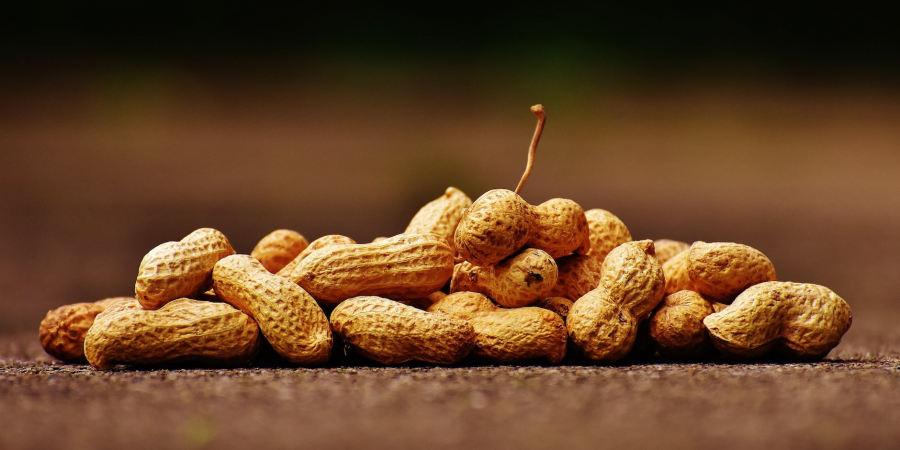

The peanut is a legume crop that is primarily farmed for its edible seeds. It is also referred to as the groundnut, goober (US), pindar (US), or monkey nut (UK). It is significant to both small and large commercial growers, and it is widely grown in the tropics and subtropics. Because of its high oil content, it is categorized as an oil crop in addition to a grain legume.China accounted for 38% of the global shelled peanut production in 2016, with an annual production total of 44 million tons. It is unusual for legume crop plants to generate peanut pods underground (geocarpy) as opposed to above ground. The botanist Carl Linnaeus named peanuts hypogaea, which translates to "under the earth," in recognition of this trait.
Nut flour, protein, and oil are further items made from peanuts. These products are used in many different meals, including cakes, sweets, candy, snacks, and sauces.
The nutrition facts for 3.5 ounces (100 grams) of raw peanuts:
Calories: 567
Water: 7%
Protein: 25.8 grams
Carbs: 16.1 grams
Sugar: 4.7 grams
Fiber: 8.5 grams
Fat: 49.2 grams
Saturated: 6.28 grams
Monounsaturated: 24.43 grams
Polyunsaturated: 15.56 grams
Omega3: 0 grams
Omega6: 15.56 grams
Trans: 0 grams

What are the benefits of eating peanuts?
Peanuts are high in oil, protein, and other beneficial elements. Research indicates that peanuts are associated with a lower risk of heart disease and may even help with weight loss.
A rich source of vital nutrients, including many B group vitamins, vitamin E, minerals like iron, zinc, potassium, and magnesium, antioxidant minerals like copper, manganese, and selenium, as well as other antioxidant compounds, peanuts are also a strong source of dietary fiber.Nuts are a great source of high-quality protein and good fats. They have a fair amount of calories as well.
The majority of the fat in peanuts is made up of mono- and polyunsaturated fatty acids. To manufacture peanut oil, they are frequently employed.
Peanuts are a very high-quality plant-based protein source. Remember that some people have allergies to the protein found in peanuts.
Peanuts have few carbohydrates. They are therefore a healthy nutritional option for those who have diabetes.
A great source of many vitamins and minerals are peanuts. These consist of magnesium, phosphorus, copper, niacin, folate, manganese, vitamin E, thiamine, and biotin.
Plant chemicals abound in peanuts. These include of antinutrients like phytic acid and antioxidants like resveratrol and coumaric acid.Since peanuts are high in protein, their body composition and muscular mass can both be enhanced.
Due to their high filling content, peanuts can be a useful part of a diet plan for losing weight.Nuts rich in heart-healthy fats like peanuts may help stave off heart disease. Additionally, they might lower your risk of gallstones.
The peanut, well-known for its savory, salty taste, is a common snack and a multipurpose ingredient that can be used to create peanut butter, baked products, sauces, smoothies, and more.
Boiled Peanut Salad🥗🥗🥗

Boiled peanuts (groundnuts), raw veggies, lemon, and spices combine to make this nutritious and healthful Indian-style salad. Serve the Boiled Peanut Chaat salad hot, with coffee or tea on the side. Low-carb, vegan, and keto compatible.
Ingredients :
Raw peanuts
Cucumber: salad cucumber
Tomato: the cherry tomatoes.
Green chili: Thai green chili.
Herbs: finely chopped mint and coriander leaves.
Spices: Red chili powder and chaat masala.
Lime Juice: juice of half a lime.
Instructions:
Boil the raw peanuts.Cook it for 30 minutes or until done.
Chop all your veggies, removing any seeds/skin/stems needed.
In a large mixing bowl, add all the ingredients. Toss well until all the ingredients are mixed and well seasoned.
The Boiled peanut salad recipe can be refrigerated in an airtight glass container for up to 2 days.


